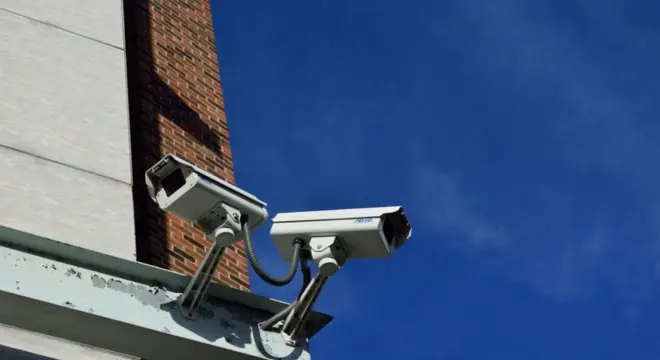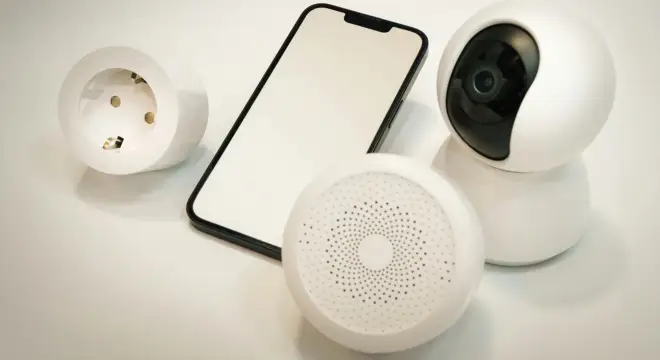What to Do in a Home Invasion: Steps to Stay Safe
The first thing I want you to remember is this: don’t try to be a hero. Your safety—and the safety of anyone else in the house—is far more important than protecting belongings. When I think back to the cases I’ve studied, the difference between someone getting hurt and staying safe often comes down to this very first decision.
As soon as you realize someone has broken in, get yourself out of the house. I know panic can make your heart race and thoughts scatter, but take a few deep breaths, move quietly, and head for a safe place. For most people, that’s a neighbor’s house—close enough to reach quickly and full of people who can help.
If your family members are home, your priority is getting them safe too. I’ve seen situations where someone tried to confront the intruder and it ended badly. Instead, quietly guide everyone to a secure room if escape isn’t immediately possible. Lock the door, stay low, and keep communication minimal—just enough to ensure everyone knows what’s happening.
One practical tip I always stress: plan your exit routes in advance. It might sound obvious, but in the heat of the moment, it’s easy to forget the fastest way out. Think about doors, windows, and even paths around the property. Having a mental or even written plan can make all the difference when you’re scared and stressed.
Remember, in this moment, your goal isn’t to stop the burglar—it’s to protect life. Everything else, property, possessions, cameras—they can all be replaced. You can’t replace a life or safety.
Have you ever thought about where your “safe spot” would be if something like this happened? Take a moment now to visualize it—it could save you precious seconds later.
Alert Authorities – Call the Police

Once you’re in a safe spot, the next thing I always stress is: call the police immediately. Even if it feels like everything is happening too fast, getting the authorities involved quickly is crucial. When I studied burglary cases, the fastest response often meant the intruder was caught or at least the damage was minimized.
Give them as much detail as you can: your address, what you’ve seen, and whether you believe the intruder is still inside. Keep your voice calm and clear—even if your heart is racing. If you have a phone with speaker mode, use it so your hands are free and you can stay alert.
I also recommend referencing a trusted security source for additional verification and tips. Having a verified alarm or security system on record with your local police can speed up response times and sometimes even deter intruders before they enter. If your home has cameras, let the dispatcher know; it helps them prepare and could assist in identifying the suspect.
Pro tip: If you’re in a multi-story or apartment building, consider telling the dispatcher about entry points and whether neighbors are likely to be present. These small details can make a big difference.
Preserve Evidence – Don’t Touch Anything
This is one that I can’t stress enough: do not touch anything inside your home until the police arrive. Broken doors, drawers, or scattered items might feel instinctively like they need to be fixed or cleaned—but all of that is evidence. Moving anything can compromise an investigation and make it harder for the authorities to track down the culprit.
If you want, you can quietly photograph from a distance, but only if it’s safe and doesn’t alert the intruder. Otherwise, just stay put, keep your distance, and let the professionals handle it.
Think of it this way: everything you leave untouched is a piece of the puzzle that could bring your intruder to justice. Preserving evidence is just as important as preserving life in this moment.
Document the Crime – File a Report
After the police arrive and it’s safe to re-enter, the next step is documenting everything. I always tell people to write down what’s missing or broken, and take photos or videos wherever possible. Check any security footage you may have; even small details can help investigators.
Make a complete inventory of stolen items, including estimated values. You might be surprised how often people forget small items—like prescriptions, electronics, or personal documents—that burglars often target. Having a clear report not only helps the police but also makes the insurance process smoother.
Insider tip: Go room by room and double-check medicine cabinets, wallets, and even drawers you think are safe. Burglars often look for easily sold or sensitive items.
Contact Insurance & Financial Institutions

Once you’ve documented the scene, it’s time to contact your insurance company. Provide your inventory, photos, and any supporting documents. If you’re a homeowner, gather proof-of-ownership; renters should have their personal property lists ready. A thorough claim will save you headaches later.
Next, call your bank. Check for stolen credit cards or sensitive documents. Reset passwords and PINs immediately, and consider enrolling in an identity theft protection service. I always suggest a precautionary check with credit bureaus as well—place security alerts or freezes if needed.
Think of this as rebuilding your security layer by layer: physical, then financial. Each action now prevents cascading problems later.
Recover and Secure Your Home
Finally, let’s focus on restoring your home and preventing future incidents. I know it can feel overwhelming, but taking concrete steps gives a sense of control. Start by repairing broken doors, windows, or locks. Then, consider upgrading your security:
- Home alarms and motion sensors – According to Security, motion-activated alarms are one of the most effective burglary deterrents.
- Security cameras & video doorbells – Not only do they provide evidence, but burglars often avoid homes with visible cameras.
- Smart locks and lights – Remote access and programmed lighting give the illusion someone is home, deterring opportunistic intruders.
- Safes for valuables – Hide expensive items in a secure, concealed location.
- Digital security – Change passwords, enable two-factor authentication, and secure devices.
It’s important to approach this step methodically. I always suggest making a checklist: fix damage first, then implement preventive measures. This way, you regain peace of mind and a sense of control.
Small entry points like basement windows can be a weak spot; check out these 7 genius ways to make your basement windows burglar-proof to add an extra layer of safety.
Remember: Emotional recovery is part of this process. Don’t hesitate to involve family or speak with a professional if the event has shaken you deeply.
Long-Term Safety – Preventing Future Break-Ins
Once the immediate aftermath is over, it’s tempting to think the danger has passed. I always remind people: this is the time to strengthen your defenses for the long term.
Start with a home security audit. Walk through your property as if you were a burglar. Look for weak doors, windows, or blind spots. Reinforce any points that feel vulnerable.
Behavioral changes are equally important. Avoid posting travel plans or valuable purchases on social media. Change routines slightly so your home doesn’t have predictable patterns. Even small adjustments—like locking doors immediately or storing spare keys in secure locations—can make a difference.
Finally, consider legal and self-defense measures, but only what’s allowed in your region. Knowing your rights and having legal protection can provide both confidence and peace of mind.
Don’t forget outdoor areas—simple measures can make your backyard much safer. Here are 4 home security hacks for your backyard that can significantly reduce risks.
Remember: Long-term prevention isn’t about fear—it’s about reclaiming control and reducing the chance this happens again.
Community Awareness – Alert Your Neighbors

You’re not alone, and your experience can actually help protect your neighborhood. I always encourage people to alert neighbors after a break-in. Burglars often target multiple homes in the same area, and timely communication can prevent others from suffering the same fate.
Use tools like Nextdoor, WhatsApp groups, or simple phone calls to inform neighbors. Let them know what happened, and share any tips on suspicious activity. If you can, collaborate to set up a neighborhood watch or casual check-ins.
Even simple awareness measures, like noting unusual activity around the block, can prevent crimes. Your vigilance doesn’t just protect your home—it strengthens the community’s safety net.
Tip: Encourage neighbors to install basic security measures too—lighting, cameras, or alarms. Collective action works better than going it alone.
Expert Tips & Real-Life Lessons
I’ve found that readers value practical examples and expert insight more than generic advice. Let me share a few that really stick:
- Case Study: A family I researched had their home broken into while away on vacation. They had cameras and an alarm system, but no plan for immediate communication. By alerting neighbors and calling the police right away, they minimized the loss and identified the intruders through footage.
- Expert Advice: Expert recommends motion-activated cameras and keeping a log of important documents and valuables. Small measures like this significantly increase your chances of recovering stolen items.
- Social Proof: People on forums like Reddit share similar experiences—neighbors checking in, quick police response, or even noticing suspicious patterns ahead of time. These real stories show that preparation and community awareness truly matter.
Learning to recognize early warning signs can give you an edge. Check out this guide on signs of burglary to stay one step ahead.
Takeaway: Learn from others, combine their strategies with your own precautions, and build a personal plan that works for your household.
Final Thoughts
Dealing with a home break-in is overwhelming, and it’s natural to feel shaken. I want you to remember: your safety always comes first—property, belongings, and valuables can be replaced, but your life cannot.
By taking calm, practical steps immediately, documenting the incident, securing your home, and involving your community, you not only protect yourself but also regain a sense of control.
Use this experience as a reminder to prepare, prevent, and plan—from alarms and cameras to exit strategies and neighborly communication. Each small action strengthens your security and your peace of mind.
Ask yourself today: Have you thought through your “safe place,” exit routes, and long-term home security? A little planning now can save a lot of stress and danger later.
For more tips on keeping your home safe and secure, check out our home security section.
Disclaimer: This article is for informational purposes only and is not legal or professional advice. Always follow local laws and regulations regarding home security and self-defense. In case of a break-in, contact emergency services immediately.


